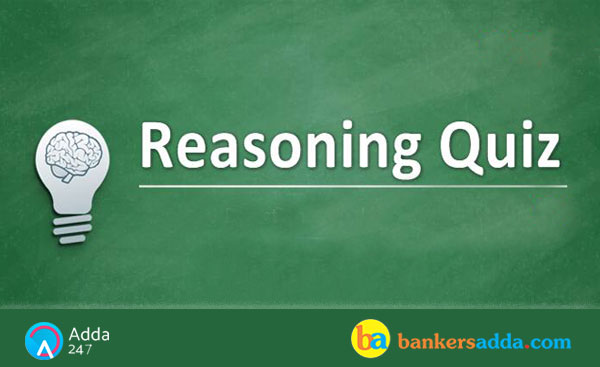
Directions (1-5): In this question, relationship between different elements is shown in the statements. The statements are followed by conclusions. Study the conclusions based on the given statement and select the appropriate answer.
Q3. Statements: A = K > X < L > N ≤ R; Q ≥ A; N = M
Conclusions:
I. Q > X II. K > M
Q4. Statements: J = K > X < L > N ≤ R; Q ≥ K; J < M
Conclusions:
I. Q > X II. X < M
Q5. Statements: J >K > X < L > N ≤ R; Q ≥ J < M
Conclusions:
I. R < M II. M ≥ R
Directions (6-10): Study the information and answer the following questions:
In a certain code language
‘eaten sweety an man’ is written as ‘ la bc ta zo ’
‘grass tree eaten group’ is written as ‘ cv vx la mo ’
‘group an yell ban’ is written as ‘ zo dv ea vx’
‘ban all sweety fruity’ is written as ‘fx ta kz dv ’
Q6. What is the code for ‘man’ in the given code language?
Q7. What is the code for ‘tree’ in the given code language?
Q8. What is the code for ‘yell’ in the given code language?
Q9. What is the code for ‘ban’ in the given code language?
Q10. What would be the possible code for ‘grass fruity taste’ in the given code language?
Directions (11- 15): In each of the questions below are given some statements followed by some conclusions. You have to take the given statements to be true even if they seem to be at variance with commonly known facts. Read all the conclusions and then decide which of the given conclusions logically follows from the given statements disregarding commonly known facts.
Q11. Statements:
Some chairs are handles.
All handles are pots.
All pots are mats.
Some mats are buses.
Conclusions:
I. Some buses are handles.
II. Some mats are chairs.
III. No bus is a handle.
IV. Some mats are handles.
Q12. Statements:
All birds are horses.
All horses are tigers.
Some tigers are lions.
Some lions are monkeys.
Conclusions: I. Some tigers are horses.
II. Some monkeys are birds.
III. Some tigers are birds.
IV. Some monkeys are horses.
Q13. Statements:
Some benches are walls.
All walls are houses.
Some houses are jungles.
All jungles are roads.
Conclusions:
I. Some roads are benches.
II. Some jungles are walls.
III. Some houses are benches.
IV. Some roads are houses.
Q14. Statements:
Some sticks are lamps.
Some flowers are lamps.
Some lamps are dresses.
All dresses are shirts.
Conclusions:
I. Some shirts are sticks.
II. Some shirts are flowers.
III. Some flowers are sticks.
IV. Some dresses are sticks.
Q15. Statements: Some trains are cars.
All cars are branches.
All branches are nets.
Some nets are dresses.
Conclusions:
I. Some dresses are cars.
II. Some nets are trains.
III. Some branches are trains.
IV. Some dresses are trains.
You may also like to read:











 GA Capsule for SBI Clerk Mains 2025, Dow...
GA Capsule for SBI Clerk Mains 2025, Dow...
 The Hindu Review October 2022: Download ...
The Hindu Review October 2022: Download ...
 SBI Clerk Junior Associate Result 2025 S...
SBI Clerk Junior Associate Result 2025 S...







